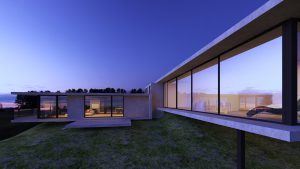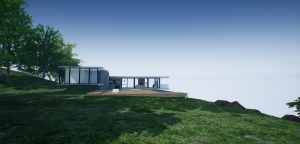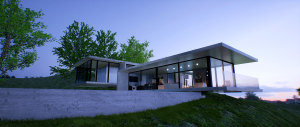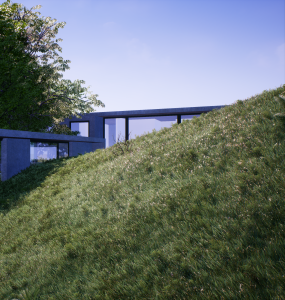
Mr. Norman Anton: A 3D Artist We Should All Emulate
 Needless to say, the acquisition and growth of technology is fast and lose. Fast in that advancements are seen within only a matter of months; today’s sought-after smartphone may be tomorrow’s obsolete model. Lose, as everything’s possible; everything’s permitted.
Needless to say, the acquisition and growth of technology is fast and lose. Fast in that advancements are seen within only a matter of months; today’s sought-after smartphone may be tomorrow’s obsolete model. Lose, as everything’s possible; everything’s permitted.
In the 3D industry, blessed is the artist who is malleable and flexible. Blessed is he or she who knows how to adjust to the demands of the trade. Those who are not willing to adjust, get left behind. And even a week’s delay sets you back, costing you potential learning and potential clients.
And this Mr. Norman Anton knows all too well. Armed with knowledge, dedication and the willingness to learn further, Mr. Anton is one artist we can all aspire to be. Xeno Creatives had the most fortunate chance to sit down with him to get his views on how the 3D industry has changed throughout his career and how this molded his work ethics and mindset as an artist.
Xeno Creatives (XC): We understand that being an experienced interior and architectural designer such as yourself, you start with the very basic of tools for honing your discipline. As such, what processes did you have to learn, given the technical know-how needed for 3D ArchViz and 3D presentation, to be well-versed in the medium?
Norman Anton (NA): In line with 3D ArchViz, this deals with architecture and interior design. There are so many factors to consider to start working with ArchViz. I need to work on the story and analyze behind the concept of the design process. The planning stage follows. Alongside this, I’ll also need 3D on every detail. The basic step to interpret my concept is to work through manual sketching. I need to draft everything before I proceed to 3D massing using 3Dsmax.
After that, I will utilize the initial 3D models to enhance the design concept and refine the idea from the sketch.
 Going deeper into the 3D process, we move to modelling. Modelling requires that my cameras’ angles be set to concentrate on the focus subject. Next is lighting to define my space and texturing to coordinate the colors. Proportionality is also important in every element of the design. The final stage is post-production before delivery of the final 3D image.
Going deeper into the 3D process, we move to modelling. Modelling requires that my cameras’ angles be set to concentrate on the focus subject. Next is lighting to define my space and texturing to coordinate the colors. Proportionality is also important in every element of the design. The final stage is post-production before delivery of the final 3D image.
The whole package in 3D presentation is with the walkthrough animation VR and interactive. Depending on the clients’ specifications, the basic software applications involved are 3Dmax Vray, Adobe products, and Unreal Engine.
XC: When did you realize that you wanted to pursue the discipline? Did it start off as a want or a necessity?
NA: After I graduated from Architecture, I realized that the digital age is approaching fast. I saw that it’s a necessity to connect to the digital world. I needed to learn work in 2d and 3D using various software because of the trade’s complexity and the many possibilities.
First, it was a challenge because I felt that I had to start from the basic. I invested time in learning and exploring more on digital environment. I soon found it to be an interest. Over time, it grew to be my playground.
 XC: How does the regular day of a 3D designer look like?
XC: How does the regular day of a 3D designer look like?
Coordinating with other designers, working on the concept, researching on inspiration in design and 3D ArchViz, sketching, and proceed to the 3D product output.
NA: Regular days are usually relaxed; I usually spend the entire day looking and researching for new inspirations in design, scribbling down designs in sketch; learning on new processes in 3D presentation software and hardware. But if I have a deadline, it’s a different story.
XC: Through your professional lens, how did architectural renderings improve over the course of years?
NA: From purely manual rendering, mix media, 3D Autocad wireframe to smooth render, then 3D Max came in to generate photo-realistic 3D images and produce animation walkthroughs. And now, Unreal Engine which I believe can help a lot in ArchViz as it allows for my story and concept to be presented in different ways. I’d say that architectural renderings has definitely improved; it had made the production faster than we thought it ever would.
XC: Does your use of Unreal Engine give you an edge over other 3D designers or is everyone in on the game?
NA: Yes it definitely is an edge. Using Unreal engine allows for a lot of possibilities in presentation. I can make my story interactive and incorporate all the information to produce the whole package for presentation.
 XC: Have you tried your hands on other media? If so, what was it?
XC: Have you tried your hands on other media? If so, what was it?
NA: Manual art in painting and sketching were both a part of my training in college. It allowed me to express my ideas inside my head. It definitely had a more natural feeling to it.
XC: If you weren’t doing what you’re doing, what do you think you’d be specializing in at present?
NA: Other than 3D artist, I probably would be in the design and build industry or food industry.
XC: As a 3D designer, do you see the Philippines as fertile grounds for your discipline to advance further?
NA: Yes, actually I do not at all consider location or country to be a deterrent to the advancement of my discipline. Speaking for myself, other Filipinos abroad and architects and designers alike, it’s the support given to them and their will to learn and desire to advance their craft is what matters most. The desire and passion will keep you awake at night. Trust me.
 XC: Do you see yourself as one who contributes to the Philippine 3D Industry?
XC: Do you see yourself as one who contributes to the Philippine 3D Industry?
NA: Maybe in a small scale. As I worked with my countrymen in Singapore I handled the department in 3D, shared the process, pipeline, and timeline to resolve the issue to the best use of my technical skills and experience. But that would definitely be a goal for me.
XC: Where do you see yourself in the coming years?
NA: Hopefully seating in my own chair as head of a company.
XC: What piece of advice or message can you give young aspirants wanting to enter the industry?
NA: Invest time in learning and exploring. Work hard on your craft, but most importantly, do it all with heart and passion. Be aware on the updates like software hardware and technology.
Mr. Norman Anton is definitely one artist his contemporaries and future artists in the industry should all vie to become. Indeed, the industry’s future are secured in the hands of the likes of Mr. Anton.

